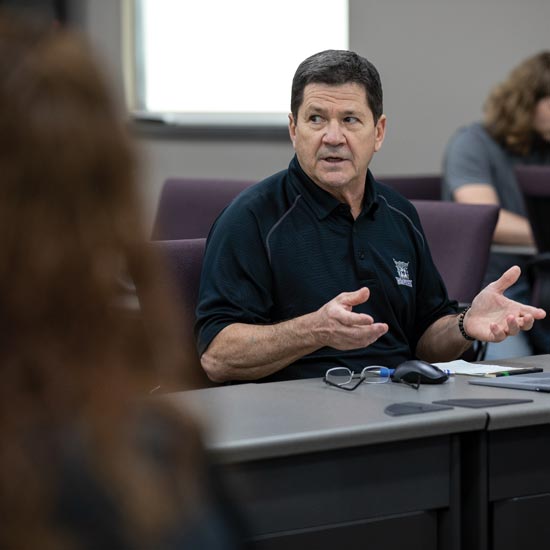Throwing off Fear: A Prepared Response
Katie England, Marketing & Communications
The following is one part of our Throwing off Fear feature article. Scroll to the bottom of this page for links to our other sections.
As Weber State’s Public Safety Director, Dane LeBlanc has spent years preparing for worst-case scenarios, and last March, one happened.
When the COVID-19 pandemic forced WSU, along with other universities across the nation, to move to online classes, he was thankful for the plan Weber State already had in place.
 “I have learned from days in the military, you will respond to the level of training you have been involved with,” LeBlanc said.
“I have learned from days in the military, you will respond to the level of training you have been involved with,” LeBlanc said.
When LeBlanc first started hearing word of COVID-19 spreading outside of China in late January and early February, he pulled out the university’s pandemic response plan for an update.
The pandemic response plan had been put together after swine flu, a novel influenza, had swept the globe in 2009, and updated again during the Ebola outbreak that started in 2014. LeBlanc coordinates the WSU effort with Mike Davies, WSU’s police captain and emergency manager.
“Every time something happens, we get lessons learned from those things so we can adjust our approach and planning,” Davies said. “It’s been a constant, ongoing process over the last 10 years or more.”
Having that plan, as well as the support from university officials to execute annual emergency exercises, prepares those who need to be communicating when a crisis actually hits. Over the years, these emergency exercises included multiple agencies from local jurisdictions such as police, fire, paramedics, hospitals, health departments and more coming together so they know how to work together during a real emergency.
“I think it’s amazing how we’ve come together as a community, as a state, and pressed forward,” Davies said. “These are the times that will test us. It’s amazing to see the collaborative effort that everyone is making to mitigate this.”
LeBlanc said he’s proud of the preparation and collaboration that allowed for Weber State to respond effectively to one of the largest emergencies to ever face the university.
“People thought I was exercising them to death, but it’s paid off, and I can be proud of that,” LeBlanc said.
But shutting down the campus was the easy part. Figuring out when, if and how to bring services back to “normal” is far more difficult. Weber State, though it has written its own recovery plan, will continue to follow state, Utah System of Higher Education and local health department guidelines.
Balancing public safety with reopening requires detailed plans on issues like wearing face masks, social distancing, and when to reopen each specific service the campus offers.
“If we move too fast and have to back it all up, we need to be prepared for that,” LeBlanc said. “It’s possible that there could be a sudden outbreak or resurgence of the virus.”
While the economic impact of the shutdown has been large, LeBlanc said moving back to normal activities too fast could cost lives.
“I think we need to be smart and methodical about it,” LeBlanc said.
Other sections of our Throwing off Fear feature:
